1000 Years of Coronations at the Abbey
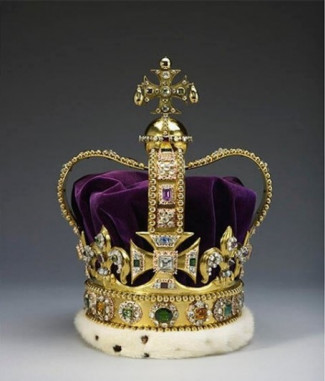
St Edward’s Crown: Royal Collection Trust (RCIN 31700)
“This, my Coronation, is not the symbol of a power and a splendour that are gone but a declaration of our hopes for the future.”
Queen Elizabeth II, Speech on her Coronation Day, 2 June 1953

The Coronation of King Charles III and Queen Camilla on 6 May 2023, almost 70 years since the Coronation of Queen Elizabeth II in June 1953, will be watched by millions of people across Britain and around the world. Almost one third of the world’s population are citizens of nations or states which are members of the Commonwealth.
This first Coronation of the 21st century marks the longest period of time (70 years) between coronations in British history, surpassing that of the time between Queen Victoria’s Coronation in 1838 and King Edward VII’s Coronation in 1902.
Expected to blend the splendour and traditions of coronations past with elements that reflect the King’s concern for the environment and sustainability, it will be attended by global leaders. Australian representatives to attend include the Governor-General, the Prime Minister and State Governors. Another NSW element to be included is the Australian-made Diamond Jubilee carriage, designed by Jim Frecklington, former horseman to Queen Elizabeth II, as the coach for the Royal couple’s journey from Buckingham Palace to the Abbey.
Built on Sydney’s northern beaches, with funding made available by the government of John Howard, the carriage weighs more than three tonnes, is five metres long and requires six horses to pull it. It was used exclusively by the late Queen and features handrails from the royal yacht Britannia, which had voyaged to Australia for Royal Tours, and interior panels of material from Canterbury Cathedral, the Mary Rose, 10 Downing Street, and the Antarctic bases of Captain Scott and Sir Ernest Shackleton. The gilded crown on top is carved from oak from HMS Victory.
On his return to Buckingham Palace, the King will journey in the Gold State Coach, featuring painted panels of Roman gods and goddesses, used at every coronation since that of William IV, and, most recently, by Queen Elizabeth II for her Platinum Jubilee celebration.
In an Australian ‘first’, violin virtuoso Madeleine Easton will play her rare 1682 Giovanni Grancino violin in the Abbey, performing pieces by J.S. Bach and Anton Bruckner as people enter, conducted by her mentor Sir John Eliot Gardiner, who is a friend of the King.
King Charles III will be the 40th monarch to be crowned at Westminster Abbey, during a ceremony in which the essential elements of the coronation have remained largely unchanged for the past thousand years.
The rituals, symbols and traditions of British coronation can be traced to medieval times and the service drawn up by Saint Dunstan, Archbishop of Canterbury, for the grand coronation of Edgar, first King of All England, at Bath Abbey in 973. From the late 14th century, each coronation ceremony has followed the model order of service laid down in Westminster Abbey’s magnificent medieval illuminated Latin manuscript, the Liber Regalis. For the coronation of James I (1603), the Latin liturgy was translated into English.
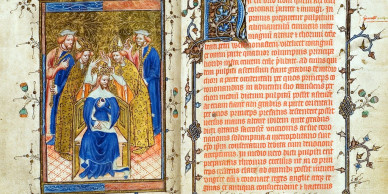
Liber Regalis, Westminster Abbey
Since its composition for the coronation of King George II in 1727, Handel’s coronation anthem, Zadok the Priest, inspired by the biblical account of the anointing of Solomon, has been sung prior to the anointing of the sovereign at every coronation for the past 300 years.
Coronations at Westminster Abbey, which was constructed on the orders of Edward the Confessor in the shape of a cross, have been a significant part of British history and pageantry since 1066 and the coronation of the first Norman monarch, William I, on Christmas Day, following the defeat of Harold II at the Battle of Hastings.
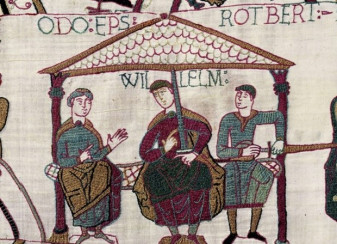
William, Duke of Normandy, from the Bayeux Tapestry
The use of Westminster Abbey as a place of coronation influenced King Henry III's rebuilding of the church in the Gothic style of architecture from AD 1245, when a large space or ‘theatre’ was planned under the lantern, between the quire and the high altar. The first king to be crowned in the present Abbey was Edward I in 1274.
Previously largely private affairs, the coronation in 1377 of Richard II introduced the concept of the coronation as public spectacle, with the first ever coronation procession. Richard II was 10 years old at the time of his coronation. In a move designed to command the respect of his subjects, he rode from the Tower of London to Westminster on horseback through streets decorated in his honour with banners and tapestries.
The Coronation of Henry VIII and his wife Katherine of Aragon took place at Westminster Abbey on 24 June 1509. Henry had received a papal dispensation to marry Katherine, from Spain, who had been formerly married (and betrothed from the age of three) to Henry’s older brother, Arthur, Prince of Wales, heir-apparent to the throne, who had died five months after his marriage.
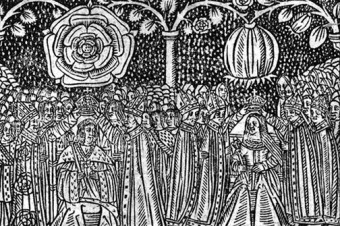
Woodcut of the Coronation of Henry VIII and Katherine of Aragon, featuring the respective Tudor rose and Pomegranate heraldic emblems, from Stephen Hawes, A Joyfull Medytacvon to All Englande (1509)
Crowned in the Abbey in 1553, Mary I, fifth child of Henry VIII and Katherine of Aragon (and the only one who survived infancy), had a new supply of coronation oil made, sent by the Catholic bishop of Arras. She felt that the earlier oil had been ‘tainted’ by her Protestant brother Edward VI at his coronation in 1547, at the age of 9.
Following the reign of her father King Henry VIII and a period of great political, social and religious upheaval, leading to the establishment of the Church of England, in 1559, Elizabeth I became the last monarch to be crowned under the authority of the Catholic Church. The coronation ceremony consisted of a procession to the Tower of London to spend one or more nights in vigil; on the day before the coronation, a royal procession paraded through the streets of the City of London to the Palace of Westminster, before the service was held in the Abbey, and the coronation banquet in Westminster Hall.
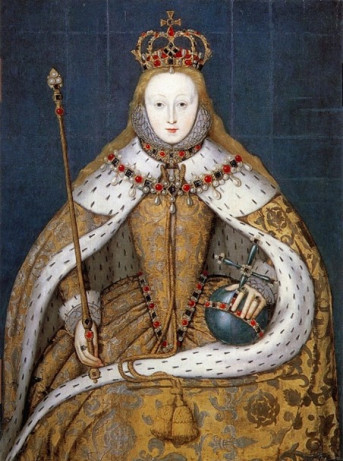
Queen Elizabeth I of England Coronation (miniature from lost original, by unknown artist c1600.) Note the Tudor roses and trim of ermine.
Elaborate pageants continued with the Coronation of Charles II in 1661. Samuel Pepys wrote: “So glorious was the show with gold and silver that we were not able to look at it, our eyes at last being so much overcome.”
The Coronation of Queen Victoria in 1838, reportedly a rather chaotic and unrehearsed affair, saw a public procession through the streets of London from Buckingham Palace. Queen Victoria’s procession would be the longest since that of Charles II in April 1661.
Almost half a million people lined the streets of London, travelling from towns and cities across Britain via the expanding public transport network. They were entertained by a fair, fireworks, and a balloon ascent.

Queen Victoria's Coronation procession to Westminster Abbey in the Gold State Coach: Royal Collection Trust (RCIN 750853)

The Coronation of Queen Victoria in Westminster Abbey: Royal Collection Trust (RCIN 405409)
Since the time of Charles II, the St Edward's Crown had been used in coronation ceremonies. However, for the young Queen Victoria, who was only 19 at the time of her coronation, a smaller Imperial State Crown was made from a total of 3,093 gems, including the Black Prince's Ruby and the St Edward's Sapphire, a jewel once belonging to Edward the Confessor.
The 20th century brought a new age of technology and the Coronation of George V and Queen Mary in 1911 was the first to be photographed. In 1937, the Coronation of George VI , which followed the abdication of his brother, Edward VIII, was the first to be broadcasted on radio.
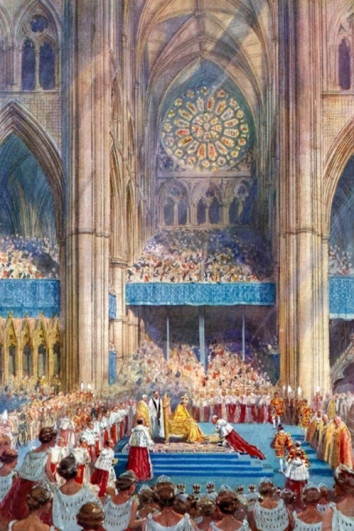
George VI receiving the homage after being crowned in 1937; watercolour by Henry Charles Brewer
The Coronation of King George VI saw the 11-year-old Princess Elizabeth II watch her father crowned at the Abbey, before 16 years later, on 2 June 1953, being crowned herself as Queen. In a striking parallel, Prince Charles was the only one of her four children, at the age of 5, to witness his mother’s coronation as Sovereign.
The Coronation of Queen Elizabeth II, following her accession to the throne on 6 February 1952 on the death of her father, was the first to be televised to a worldwide audience of over 250 million people. Although Australian television was in its infancy, film of the Coronation was dispatched immediately after the ceremony, arriving on board a Qantas flight to Sydney in a record time of 53 hours 28 minutes.
Over 8,000 guests were invited from across the Commonwealth of Nations, including 250 Australian armed force representatives, distinguishable from the other Commonwealth forces by their khaki uniforms and slouch hats. Guests were able to purchase their stools following the ceremony.
Following her oath of service, seated in the Coronation Chair, made for King Edward I in 1300, the Queen was anointed with holy oil and then invested with her robes and regalia, including the golden orb and sceptre, before being crowned Queen of the United Kingdom, Canada, Australia, New Zealand, South Africa, Pakistan and Ceylon (now Sri Lanka). She would become the longest-ever serving monarch, reigning for a period of 70 years.
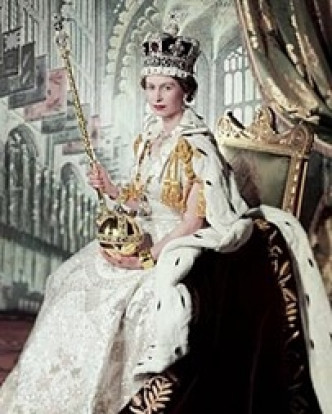
Coronation portrait of Queen Elizabeth II by Cecil Beaton, 1953